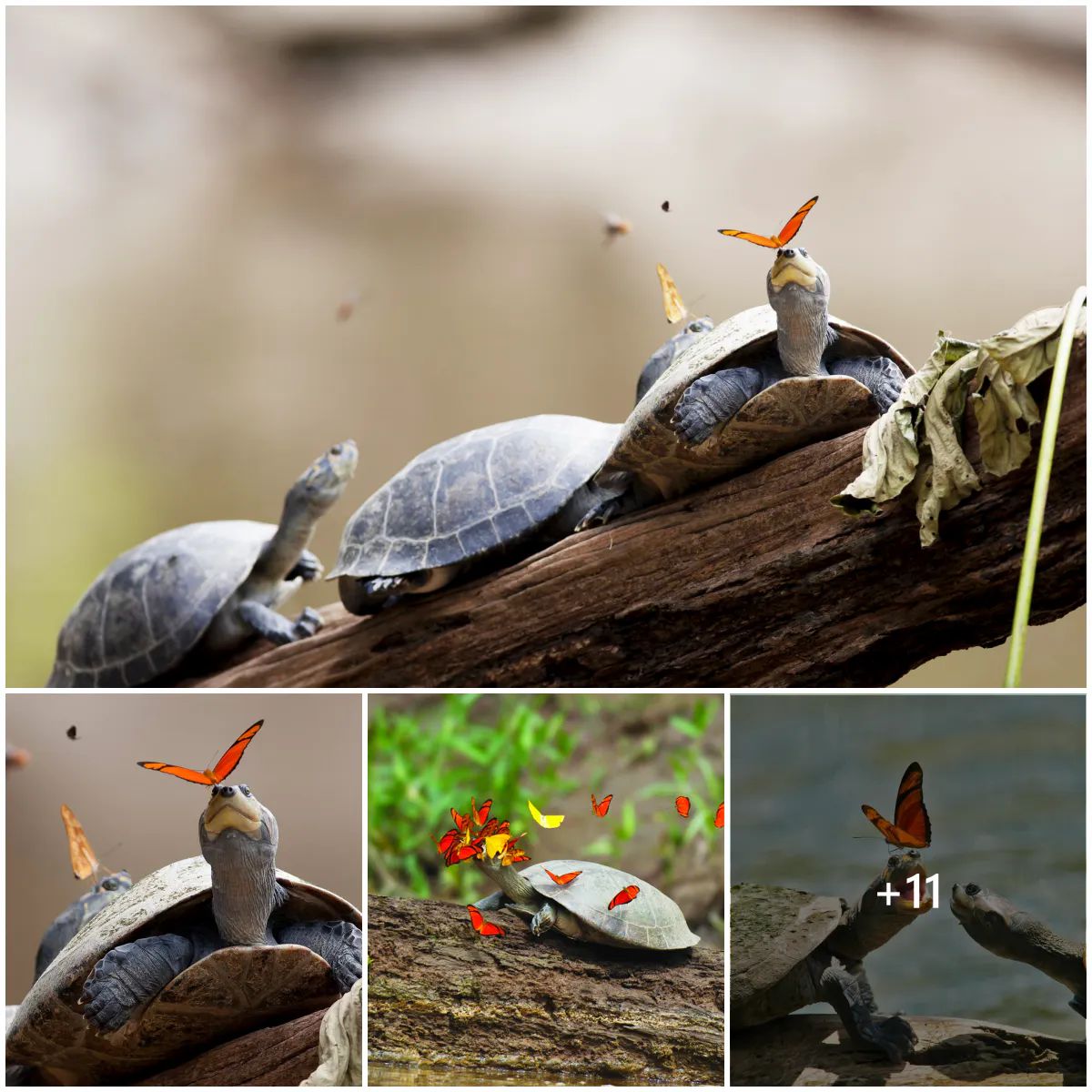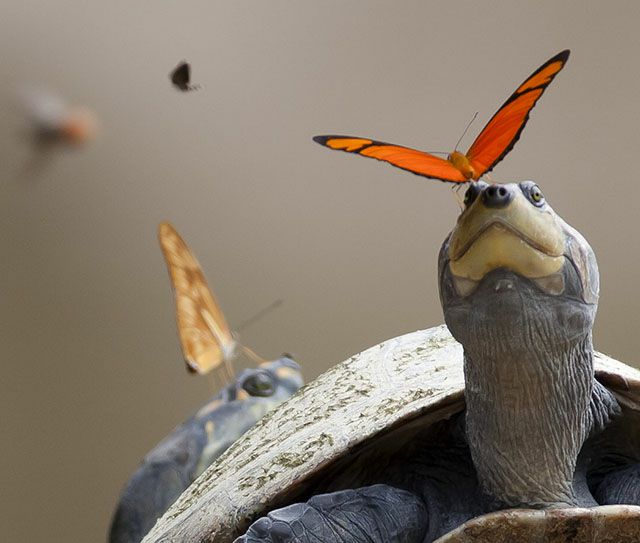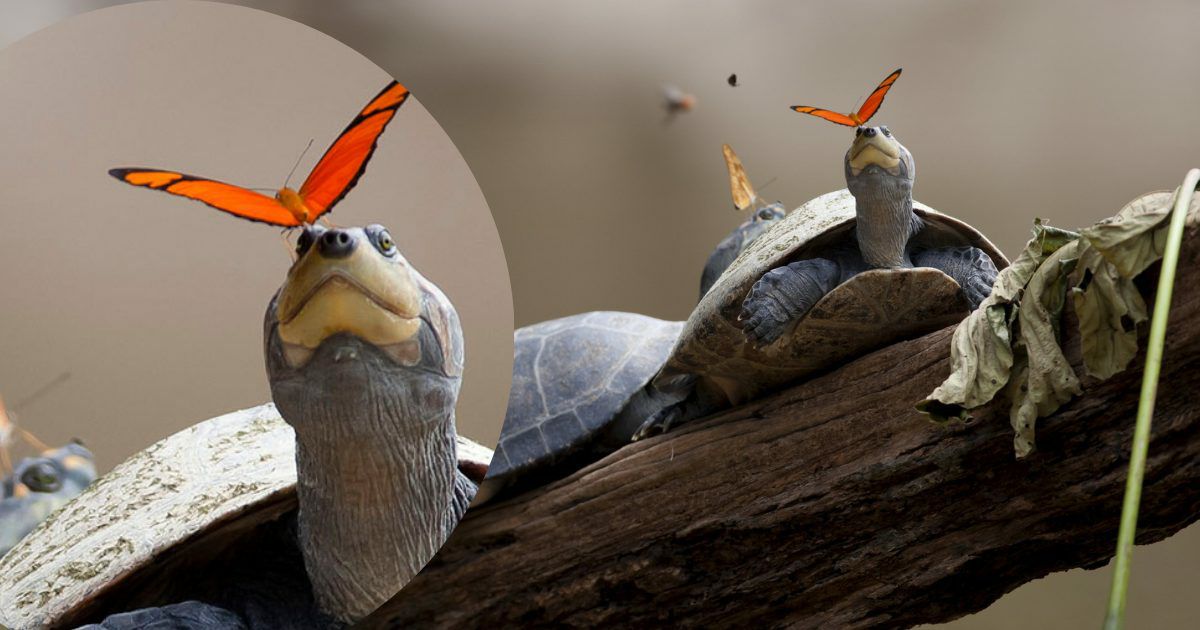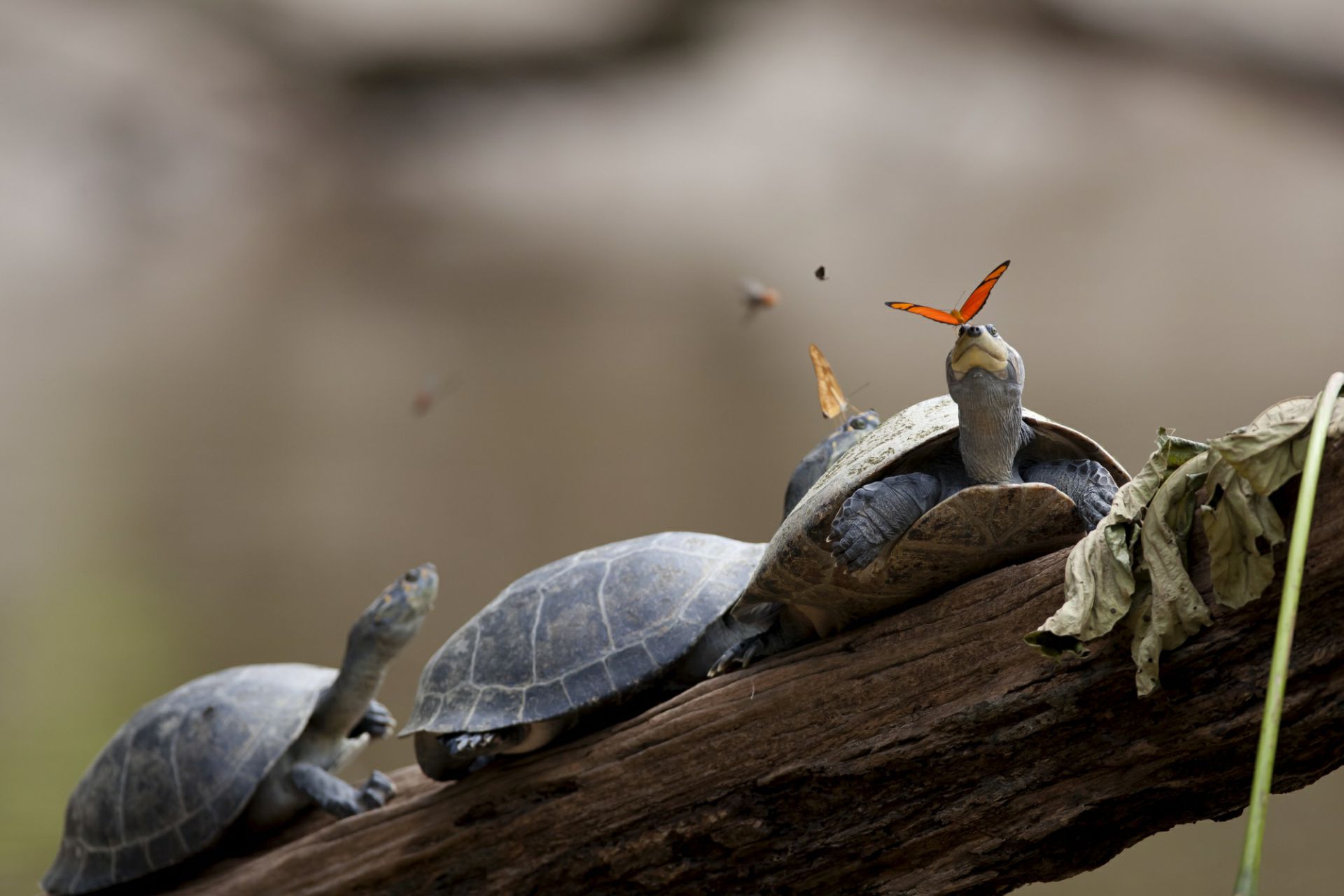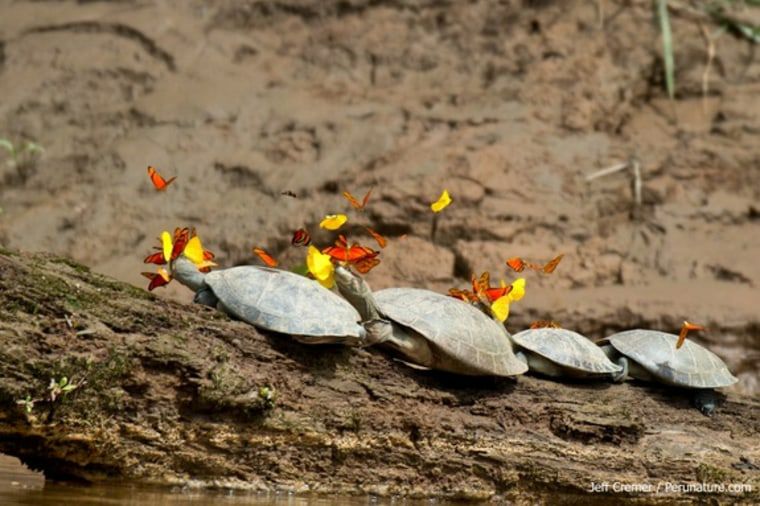A once-in-a-lifetime shot depicts butterflies drinking turtle tears.
The sight of butterflies flocking onto the heads of yellow-spotted river turtles in the western Amazon rain forest is not uncommon, at least if one is able to sneak up on the skittish reptiles. But the reason why butterflies congregate onto the turtles may be stranger than you think: to drink their tears.
The butterflies are likely attracted to the turtles’ tears because the liquid drops contain salt, specifically sodium, an important mineral that is scant in the western Amazon, said Phil Torres, a scientist who does much of his research at the Tambopata Research Center in Peru and is associated with Rice University.
Unlike butterflies, turtles get plenty of sodium through their largely carnivorous diet. Meat contains significant levels of the salt, Torres told LiveScience. But herbivores sometimes struggle to get enough sodium and other minerals, he added. “They end up needing this extra mineral source,” he said.
Butterflies flocking to several yellow-spotted river turtles.
Drinking tearsTurtle tears are not the only source of such salts for butterflies; the insects also readily get the salt from animal urine, muddy river banks, puddles, sweaty clothes and sweating people, said Geoff Gallice, a graduate student of entomology at the Florida Museum of Natural History, who has witnessed butterflies flocking to turtle tears in the western Amazon rain forest.
This region is lower in sodium than many places on Earth, because it is more than 1,000 miles (1,600 kilometers) from the Atlantic Ocean, a prime source of salt, and is cut off from windblown mineral particles to the west by the Andes Mountains. Dust and minerals make their way into the Amazon from the east, sometimes all the way from north Africa. But much of this material is removed from the air by rain before it reaches the western Amazon, Torres said.
One question that arises: Does the butterfly feeding help, hurt or have no impact on the turtles? Torres said it’s not completely clear, but the teary endeavor probably has little impact on the turtles, other than perhaps making them more vulnerable to predators like big cats, since the butterflies can obstruct their vision.
In fact, the turtles — blinded and drowning in butterfly kisses — are sometimes easier to photograph than unadorned animals, which may be able to spot an approaching photographer more easily. The photos were taken by Jeff Cremer, marketing director for Rainforest Expeditions, an ecotourism company that hosts guests in the Peruvian Amazon and organizes trips to the jungle.
Gallice said, based on his observations, that the feeding likely does little direct harm to the turtles. “The turtles have enough tears to feed the butterflies simply because the butterflies are taking so little,” he said. “They simply uptake salts through a process similar to absorption by placing the proboscis on the salt-laden (tears) and passively ‘feed.’”
Torres has also witnessed bees drinking turtle tears. Bees appear to annoy the turtles more than the butterflies, perhaps due to their buzzing wings, he said.
Hits: 0
